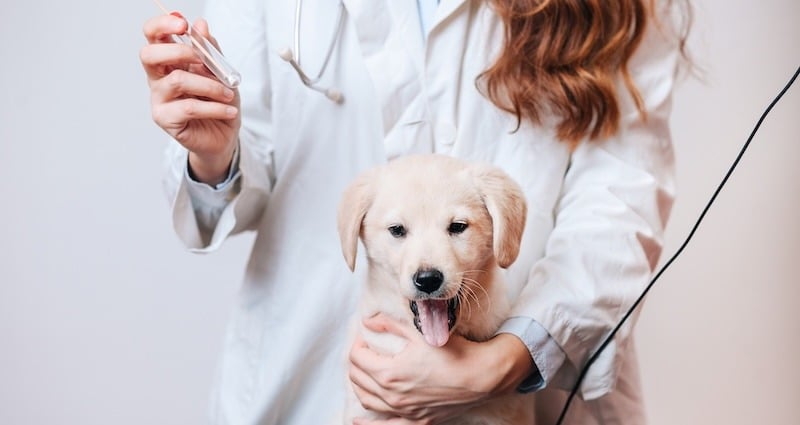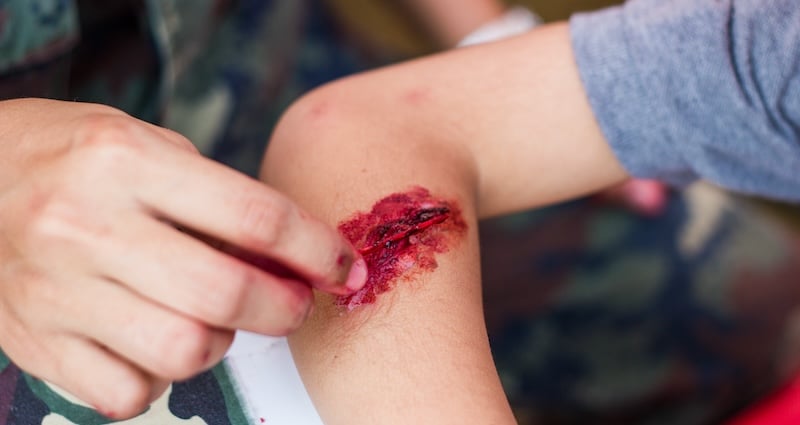DNA swabbing has revolutionized crime scene investigation. Now forensic professionals can extract information from even the tiniest of samples of epithelial cells, blood, semen, saliva, urine, bone, and other tissue.
But DNA testing for forensic analysis is only as effective as the sample collection methods. Improper sample collection, transport, and testing can lead to contaminated evidence and potentially invalidated results.
To ensure your forensic swabbing methods pass muster, we recommend you follow the steps outlined in each of these three key stages of effective DNA swab sampling:
- Preparation
- Swabbing for cells
- Preservation of cells for transport
We cover best practices for each step in detail below, including the appropriate materials to use, and the preferred precautions and methods for forensic swabbing.
Preparing for DNA Specimen Collection
The first step to effective DNA swabbing is careful preparation. You must ensure that your crime scene techs are equipped with the right equipment to do their job well. To start, you should ensure all techs have the right tools for this task.
Approved Personal Protective Equipment
Contamination of samples can become a huge issue in court—potentially compromising months or even years of detective work with a single stray hair or bead of sweat. That’s why well-fitting personal protective equipment such as gloves, masks, overalls, shoe covers, and hair covers should be employed at all times during DNA swab use and specimen collection.
Evidence Collection Kits
You should also have a few crime scene evidence collection kits equipped with the necessary tools of your trade. These collection kits are essential for ensuring the rapid collection of evidence necessary to reduce contamination. These kits may include the following:
- For bodily fluid collection, have on hand sterile swabs, distilled water, and sterile packaging that allows the swabs to air dry.
- For trace evidence collection, bindle paper – a clean piece of standard-size, folded paper – remains one of the simplest and most useful tools for containing and transporting trace evidence. Evidence tape and adhesive lifts, forceps or tweezers, and flashlights are also useful elements.
- In gathering fingerprint evidence, a kit may include life cards and tape, powders, brushes, chemical enhancement supplies and a cyanoacrylate wand.
A full list of crime scene essentials, including a breakdown of the various types of evidence collection kits and their contents, is available from the National Institute of Justice.
>>> Your vision, realized - Puritan Medical Products takes you from concept to commercial production seamlessly. Invest in top-quality custom DNA swab kits crafted exclusively for your needs.
The Right Tools
When it’s time for your department to reorder your collection equipment, choose a product made especially for forensic sample collection, with particular capabilities for touch DNA, blood, DNA under fingernails, buccal cells, and more.
Swabbing for Cells
According to a study released by the National Criminal Justice Reference Service, swabbing is the preferred sample collection method over taping for recovering DNA. Additionally, swabs do a better job of both collecting and releasing samples than tape, and are also preferable to cuttings as altering evidence in this way may compromise its integrity. However, getting the most accurate results depends upon using the most appropriate swabs for this task.
What are DNA swabs?
DNA swabs are critical elements of any crime scene investigation kit. To prevent the risk of cross-contamination that can compromise evidence, forensics investigators must use swabs that are free of human contaminants including DNA, DNase and RNase.
There are two types of DNA swabs used in crime scene investigations:
- Puritan’s DNA-free swabs are developed in compliance with ISO 18385 standard to be free of detectable DNase and RNase free.
- DNA controlled swabs are manufactured in a DNA controlled and monitored clean room environment.
Types of DNA swabs
The most common swabs used for the collection of specimens in crime scene investigations remain cotton swabs. These versatile cotton-tipped applicators are produced in a DNA-controlled environment to reduce the risk of contamination.
How to Swab for DNA
Depending on the sample type (blood, saliva, touch DNA, etc.) the swabbing method you employ may vary. Whatever swabbing methods you use, changing gloves and forceps after each item is the easiest way to avoid cross contamination.
There are three popular techniques for swabbing.
Swabbing for Touch DNA
For a more comprehensive overview of how to swab for touch DNA, please see our earlier post.
- If using a dry swab, extract distilled water from the vial using a sterile pipette and apply one drop to the side of the tip. Do not use more than one drop, and do not dip the swab into the water.
- Apply tip to sample area and with moderate pressure rotate the swab to ensure the entire swab surface has made contact with the object. To avoid compromising the sample by redepositing the specimen, do not rotate it more than once.
- Allow to air dry then place the tip in a dry transport tube or vial.
Double Swab Technique for Touch DNA
A study conducted by The U.S. National Library of Medicine found that the double swab technique improves the quality of DNA swab profiles.
- Moisten the first swab with water, buffered saline, or lysis buffers, allowing dried specimens to become rehydrated. Collect sample.
- Use a dry swab to collect the remainder of the specimen from the same spot.
Swabbing Blood or Other Bodily Fluids
The California Department of Justice lays out several considerations for swabbing blood and bodily fluids.
- Choose the right swab size. According to the CDOJ, “the size of the stain should influence the size of a substrate used to collect the stain. Do not smear a small stain over a large surface.” For a small stain choose a small tipped swab or collect the stain into just one small area of the swab.
- Slightly moisten the swab tip with distilled water, following the steps outlined above.
- Apply tip to sample area and with moderate pressure rotate only once.
- Allow to air dry.
Preservation of Cells for Safe Transport and Storage
The most important aspect of collecting cells is ensuring the swab is completely dry during transport to prevent mold and other bacterial growth.
Traditionally, swabs have been dried and then transported in an envelope or drying box, but in recent years specially designed collection tubes have become increasingly popular for both their convenience and effectiveness in preserving samples.
Breathable Transport Tubes for Advanced Sample Preservation
There are products on the market for DNA testing and forensic evidence collection packaged in resealable dry transport tubes. These products, patented by Puritan, include ID labels in every package.
These self-contained tubes ensure safe transport, and are also designed to fit into traditional test tube racks effectively. Some transport tubes also eliminate roll if laid on a flat surface or clinician's bench. Each tube is fitted with a breathable Tyvek® filter that allows the swab to dry while maintaining the integrity of the sample during transport. Transport tubes are available to hold swabs of five inches or six inches in length.
Many crime scene investigators opt to use a cotton swab that comes complete with its own aerated tip protector for convenient, reliable DNA or evidence collection. The Cap-Shure swab features a reclosable, ventilated cap over the swab that allows investigators to air dry and transport samples without risk of contamination.
Need More Insight?
Puritan is committed to helping crime scene investigators and forensic scientists get the accuracy upon which they depend. If you have questions about the right tools for your specific task, or want to discuss our customization options, we encourage you to reach out at any time.







